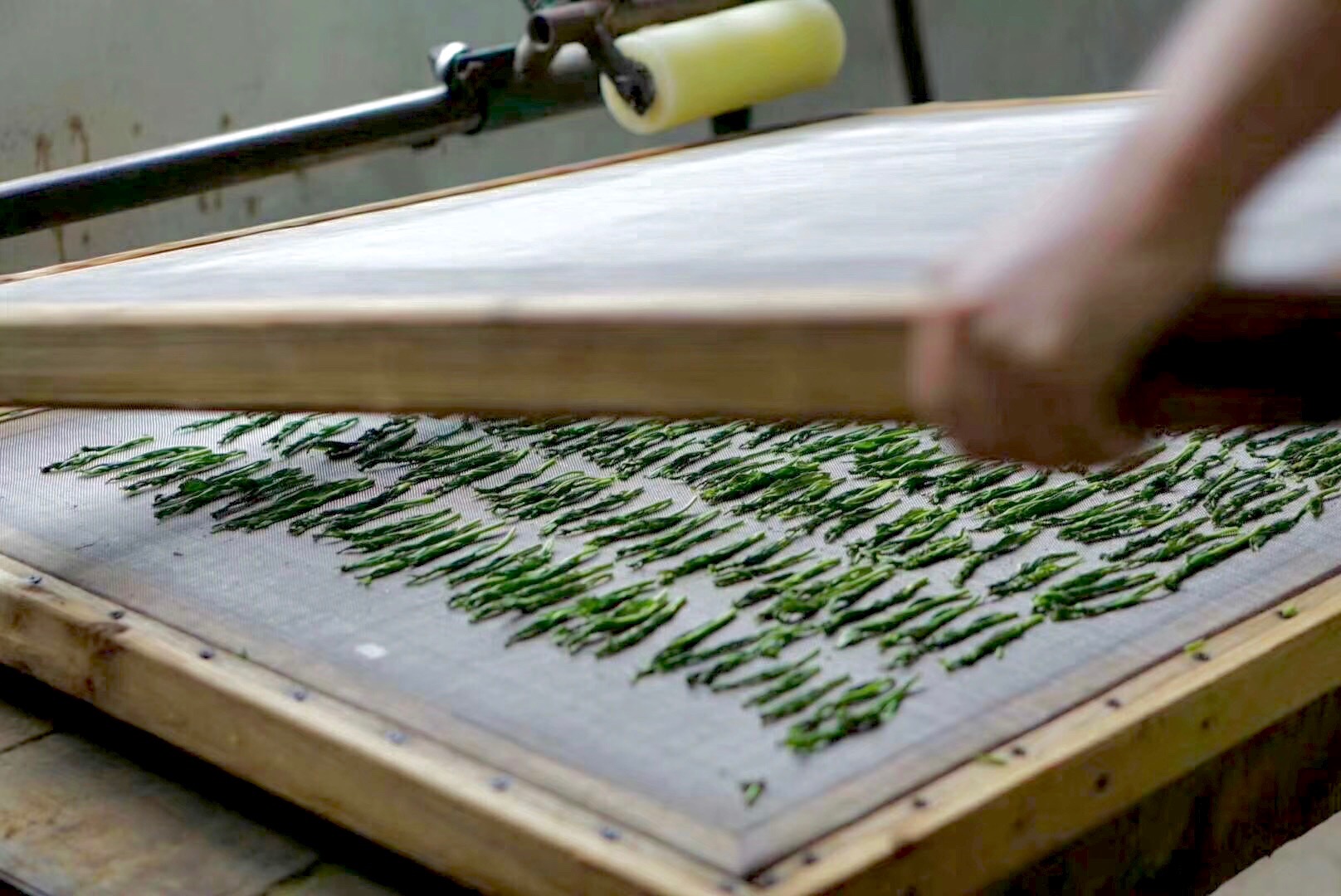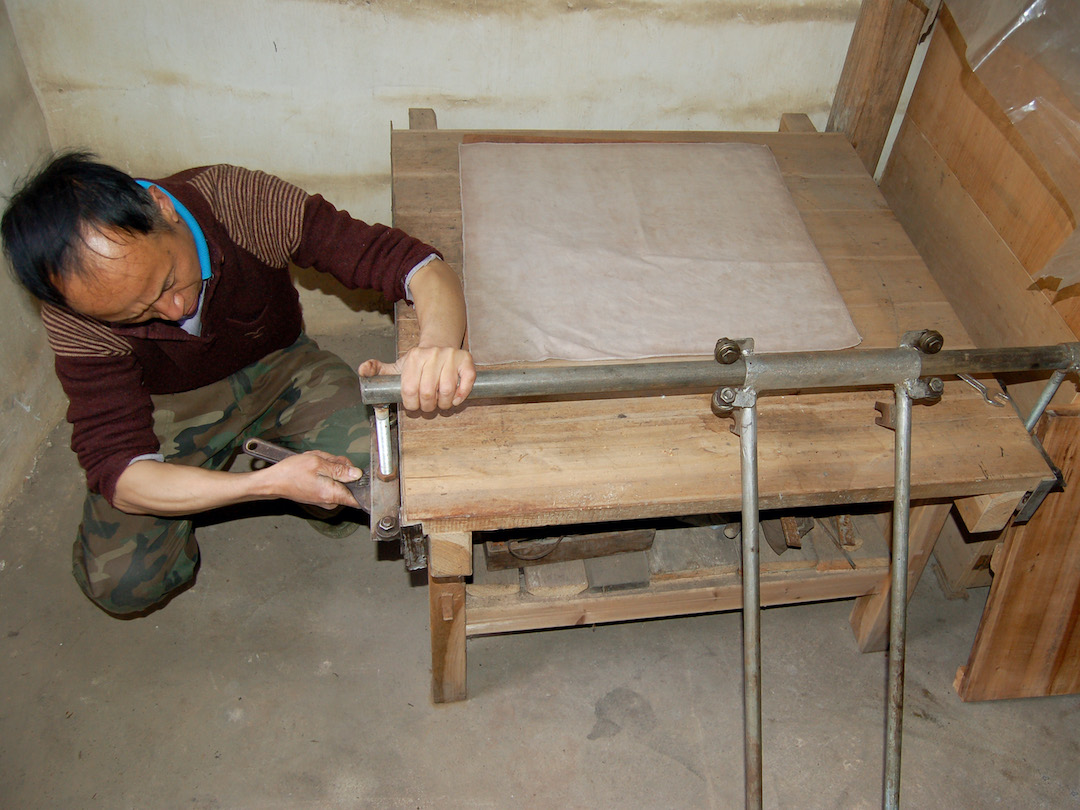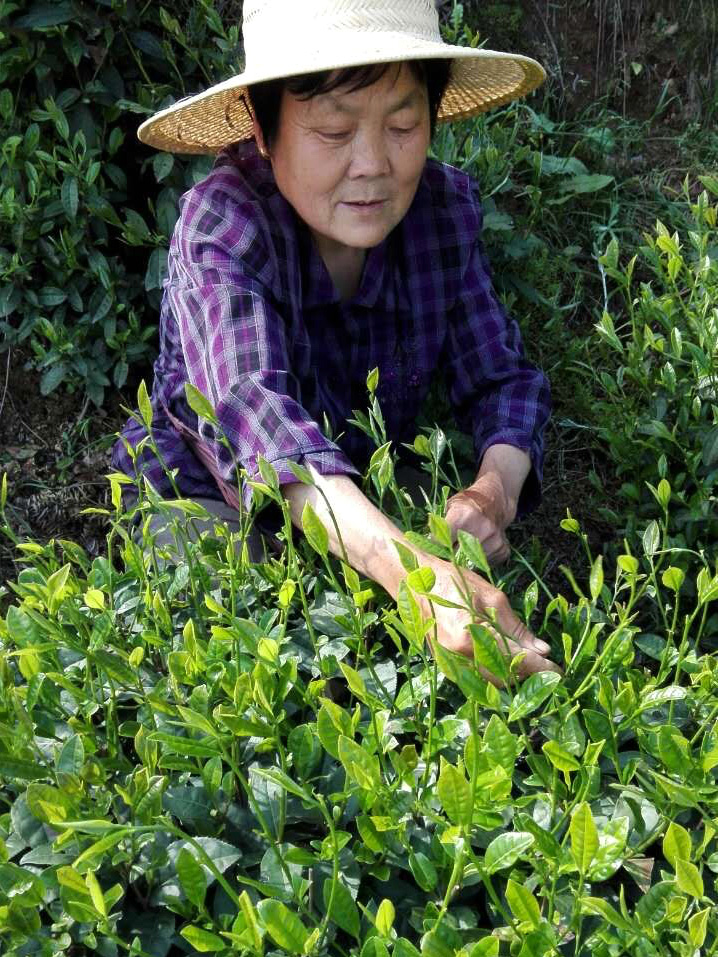

Wang Shuangxi makes one of the most distinctive and visually striking teas among all Chinese greens: Tai Ping Houkui. Not only does it stand out among the many famous teas from its origin in Huangshan (the Yellow Mountains) of Anhui Province, but it is often nationally recognized as one of China’s top ten famous teas. Tai Ping Houkui’s very large, flattened oval leaves are plucked from the Shi Da Cha (Persimmon Large Leaf Tea Bush) cultivar, which has earned it the name “persimmon tea” or “persimmon leaf tea” for their similarity to the fruit tree. They yield a tea with a soft and clean yet rich flavor with an aroma of fresh bamboo and flowers.

Producers must wait slightly longer to harvest Tai Ping Houkui than is normal for other early spring tea, because this tea cultivar’s relatively large sprigs take longer to fully develop. The large temperature differences between night and day in Tai Ping Houkui’s mountaintop tea gardens are highly conducive to amino acid synthesis in the leaves, which improves the flavor and nutrition. Because of the delayed growth caused by cool temperatures at Huangshan’s high mountain altitudes, even the first harvest of Tai Ping Houkui doesn’t start until around April 20th, during the Gu Yu solar period of China’s traditional agricultural calendar.
The delicate flat shape of Tai Ping Houkui’s enormous and intensely green leaves require many steps that can only be done by hand, such as the laying out of individual leaves. However, Mr. Wang continues to use the various traditional hand-crafting techniques alongside other more modern, quicker methods, such as an automated roller to flatten the leaves. He also makes an entirely handmade traditional version of Tai Ping Houkui for us.

Immediately after frying the fresh hand-sorted leaves, each individual tea sprig is pinched and pulled into a long straight shape by hand while the leaves are still hot and pliable. Ideally, there will be no folded or bent leaves and the bud will be held between the two older leaves twisted around it. The sprigs are then laid in careful rows without touching on a sheet of stainless steel mesh held in a wooden frame. Once the sheet is full, another sheet of mesh is laid on top to sandwich the leaves between them for flattening.
Tai Ping Houkui’s distinctive flattened shape is traditionally formed by hand with a light roller that is run over the mesh several times to press the leaves flat between the layers.
